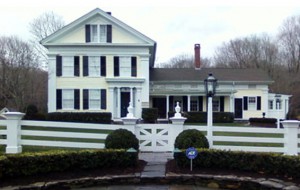What Makes a Housing Material Sustainable and Ecofriendly?
Sustainability has come knocking at the door of home construction and it has a few things to say on the matter. The first is that those large timber frames you thoughts were so green and sustainable might not be. When it comes to timber frame and other timber pieces in your home, here’s what you need to know if you want to go totally green.
Defining Sustainability in Housing Materials
To simplify things a little, here is a look at a shortened version of “sustainable forestry.” This kind of forestry aims to prevent the reduction of volume of wood in a forested area. This prevents an area from being harvested to extinction, but what does that mean for timber?
Old Growth Verses New Growth
One popular timber frame material is “free-of-heart-center” Douglas fir. These timbers come from old growth trees along the west coast of Canada and the United States. Old growth trees are a limited resource, unless you wait multiple centuries between felling them. That means timbers of this kind are not sustainable. A more sustainable option in the “boxed-heart” variety which can be gotten from younger trees.
Harvest Energy
Even if one tree is planted for every tree felled, there are other factors to consider when labeling timbers as sustainable. It’s called “embodied energy” and represents how much energy and effort goes into harvesting and preparing the timbers. For local, undried timbers, this energy is very low. That means it’s more sustainable than kiln-dried variants from further away. Choosing local wood also means less CO2 emissions from transportation vehicles. This just goes to show that not all timbers are equal when it comes to sustainability and green practices.
If you want your home to be made form sustainable materials, find out where your timber frame came from. Was it local? Was it new growth or old growth? How much energy went into preparation? When you know the answers to these questions, you can choose sustainable options for your next home project.

